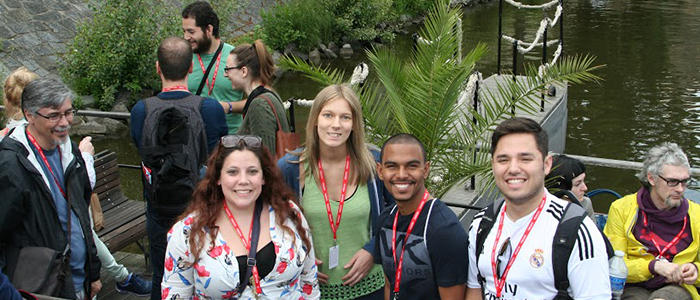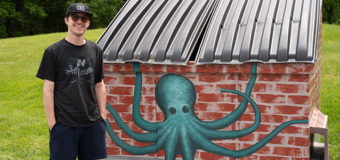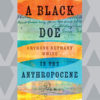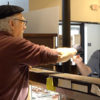ESU Theatre Visits Prague, Czech Republic

Posted by: admin on July 28, 2015, No Comments
A group of East Stroudsburg University students, faculty and alumni joined more than 5,000 theatre professionals and students at the largest scenographic event in the world: the Prague Quadrennial (PQ) of Performance Design and Space held June 18-28, 2015 in Prague, Czech Republic.
Since 1967, the Prague Quadrennial featured international exhibitions exploring the cutting-edge trends in stage, lighting costume and sound design, and new scenographic practices in a multi-day, multi-event, multi-stage format of performances, exhibitions, symposia and workshops throughout the historic core of the city.
“PQ has been a major factor in shaping the direction of world theatre and live performance for the past 40 years,” said scenic and lighting designer Yoshi Tanokura, associate professor of theatre, who, along with Margaret J. Ball, D.M.A. associate professor and chair of theatre, led the ESU group.
“At PQ, the exchange of ideas goes well beyond the narrow confines of theatrical design and style,” Tanokura said.“You learn about the latest scenographic practices and technology around the world and network with colleagues from different countries which I can now bring to ESU’s theatre productions.”
Two current students, Madison Petro, a sophomore from Moosic, Pa., majoring in both theatre and English, Christopher Robinson, a junior from Cape May, N.J., and four theatre alumni Michael Lloret ’15 of Shawnee on Delaware, Pa., Rebecca Regina ’15 of Rutherford, N.J., Ahleea Zama ’11, and Robert McIntyre ’12, rounded out the ESU contingent.
“It was my first time out of the country and my first time traveling on an airplane,” Petro said. “I went out exploring on my own, stopped in some shops where no one spoke English, and I thought it was incredible how we managed to communicate without understanding each other’s languages.
“I was surprised at how easily I was able to find my way around the city even though I am not the best with directions and none of the street signs were in English,” she said. “I loved the novelty of being in a foreign country and all the discovery that came with it.”
“There were many aspects to the conference that reminded me of the Kennedy Center American College Theatre Festival (KCACTF) with a design-oriented focus,” said Robinson, who was part of ESU’s contingent at the 2015 KCACTF Region II conference in Cleveland, Ohio.
“What I really enjoyed was the different ways each country showcased their design concepts,” he added. “Students and professors from Mexico decorated a boat with traditional designs, took us on a river tour under the famous Charles Bridge and educated us on how we could help solve Mexico’s water shortage.”
For Regina, the trip provided an opportunity to connect her theatre experience to a historical event. Since she appeared in ESU’s 2012 production of The Diary of Anne Frank, she has been interested in World War II and Holocaust history, so she visited the Terezin Concentration Camp outside of Prague.
“Terezin was a chilling, frightening and yet interesting adventure,” she said. “You can read about the Holocaust and look at pictures, but actually standing where people were murdered in masses was chilling to the bone. It calmed me to know that Terezin was one of the only concentration camps to approve theatre performances. Theatre can turn even the worst situations into something better.”
Lloret came away from the conference with two new perspectives on theatre. “As an actor looking into the world through the scope of a scenographer, I opened my mind to ideas in performance I might not have seen otherwise,” he said. “I learned that ‘the space’ is equally as important as the actor in this realm of storytelling. The designer will look at a space/set, and see it as a representation of a whole idea behind what is going on.”
Lloret also learned that technology has had a huge impact on performance design. For example, a student theatre company from Estonia used a moving light and a microphone to produce a living character that interacted with the audience. He believes a lot of these ideas he was exposed to were cutting edge, new, and foreign.
“It was a thrill to get to experience this famous international festival with my students and colleague. I am so appreciative of Professor Tanokura for organizing the students and alumni to attend. It was good to see ESU had student representation alongside much other larger American schools like Northwestern University,” Dr. Ball said.




